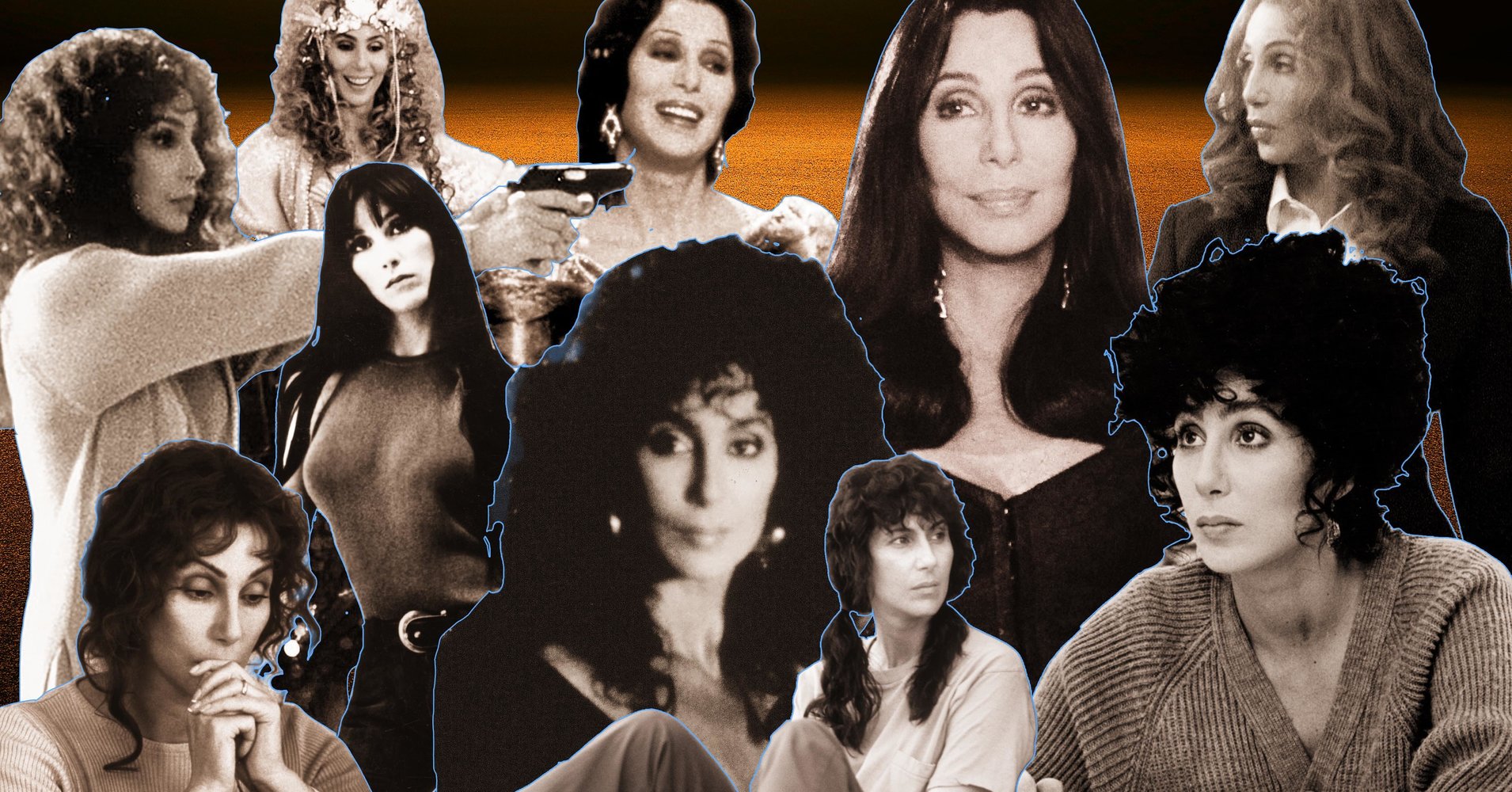[ad_1]
Of all the pop stars who have attempted to act, Cher’s track record is arguably the best. “Silkwood.” “Mask.” “The Witches of Eastwick.” “Moonstruck.” “Mermaids.” “If These Walls Could Talk.”
As her post-Sonny & Cher solo career waxed and waned in the ’80s and early ’90s, Cher’s movie career flourished ― a true achievement, given the ostentatious displays that had made her a walking glitter bomb since the mid-’60s. Shedding her eccentricities in a way that many pop stars cannot, Cher was able to transform onscreen time and again, so much so that she won an Oscar after uttering one of the most quotable lines in cinema history.
But when Cher out-glittered herself in 1998 with her mammoth “Believe” comeback, her acting career atrophied. At 52, her diva status had become mythological, even a bit comical. She was too decadent to disappear into the same down-home movie roles, and Hollywood no longer saw her as a profitable actress. Cher played along with the joke, though, portraying exaggerated versions of herself (see: “The Player,” “Will & Grace,” “Stuck on You”) even when she wasn’t actually playing herself (see: “Burlesque”).
That tradition continues today. Cher is the grande dame of the new “Mamma Mia! Here We Go Again,” making a flamboyant eleventh-hour entrance that only someone of her renown could pull off. (She plays Ruby, a famous singer who has a thorny relationship with her daughter Donna, portrayed by Meryl Streep.)
But as we relish Cher’s septuagenarian divadom, it’s easy to forget how we got here. We got here because Cher commanded maximum respect at a critical time in her career, challenging anyone who assumed her pop panache would prevent her from becoming a great actress capable of playing everyday women experiencing everyday struggles.
So let’s revisit just how Cher became the greatest pop-actor of them all, and why she maintains that superlative even if she’s graduated from Hollywood’s leading-lady graces.
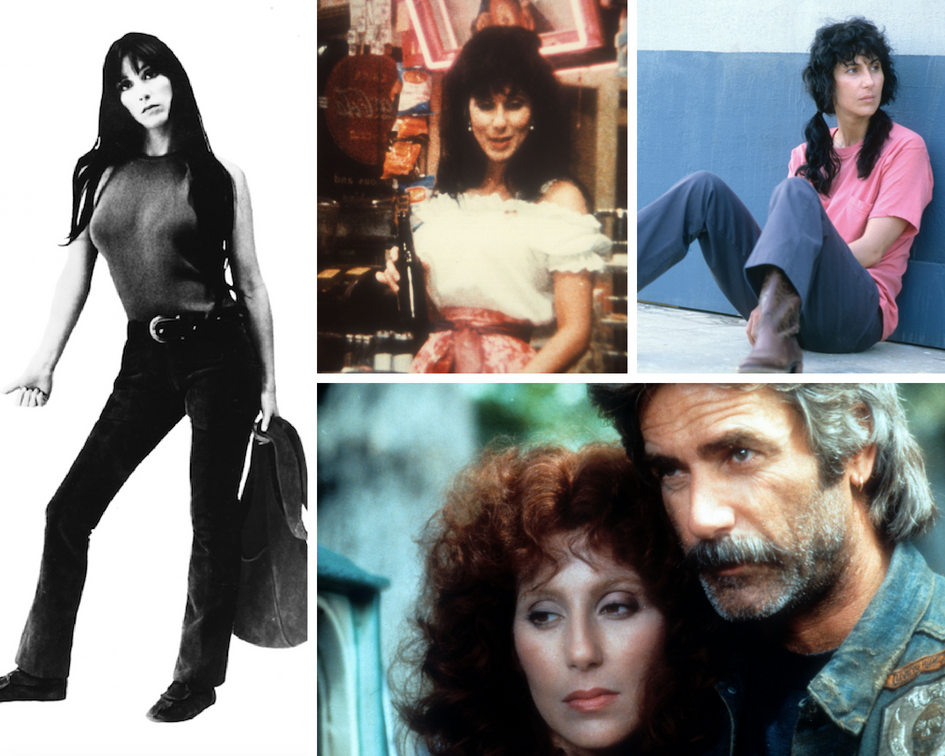
Getty/Alamy
The Beginning
“Chastity” (1969)
To trace Cher’s acting ambitions, we have to go back to 1967, when Sonny & Cher’s musical comedy “Good Times” flopped. Wanting to prove the “I Got You Babe” duo could cut it in the film world, Sonny Bono wrote her first solo lead: the title role in “Chastity,” an 83-minute oddity about a free-spirited drifter who talks to herself in public and manipulates men’s weaknesses to get ahead.
This was Sonny & Cher’s bid to appeal to young counterculture audiences who had deemed the duo square after Bono bemoaned the era’s sex and drugs. “Chastity,” released in June 1969, tried to be a gritty derivative of the French New Wave, packing big ideas ― Bono apparently said it was about society’s sudden “lack of manhood” and “the independence women have acquired but don’t necessarily want” ― into a whiplash-inducing downer involving a lesbian romance and childhood molestation.
It was another flop — an especially embarrassing one for Cher, because she alone was the face of the project. But bad movies can be testaments to good actors’ skills. Cher is at ease in front of the camera, never letting her fame announce itself before she opens her mouth. The same qualities accenting all her best film work — a scrappy confidence that reads as a proverbial middle finger to anyone who crosses her — become the highlight of “Chastity.”
Too bad the experience drew her away from movies for 13 years, during which Cher released 11 solo albums and divorced the controlling Bono, finally escaping the Sonny & Cher brand.
“Come Back to the Five and Dime, Jimmy Dean, Jimmy Dean” (1982)
In 1981, with her music career sputtering and her split from Bono six years in the rearview mirror, Cher trekked to New York to study acting with renowned teacher Lee Strasberg. Robert Altman, the celebrated director best known for “M*A*S*H” and “Nashville,” was casting the Broadway debut of Ed Graczyk’s play “Come Back to the Five and Dime, Jimmy Dean, Jimmy Dean.” Altman gave Cher the part of Sissy, a wisecracking libertine employed at a diner in small-town Texas.
When Altman rehired the Broadway cast for his big-screen adaptation of “Jimmy Dean,” Cher’s movie career was reborn. The scope of the film, released in November 1982, mirrors that of the play, with a single set and overly theatrical dialogue. But Cher has one of the meatier roles, nailing a teary monologue about Sissy’s failed marriage that Altman shoots in revealing close-ups. Sissy is a vixen who uses her sultry appeal to mask self-doubt ― something Cher related to after her split from Bono. She crimps Sissy’s smile, revealing an impressive vulnerability as the character laughs through her pain.
“Jimmy Dean” wasn’t a smash, but it provided a vote of confidence at a murky time for Cher, yielding her first Golden Globe nomination.
“Silkwood” (1983)
Cher’s next role was make or break: Can the queen of glamour become the fledgling of frump? For “Silkwood,” she was again working with one of Hollywood’s most gifted directors, Mike Nichols (“The Graduate,” “Who’s Afraid of Virginia Woolf?”), playing a dowdy lesbian working at a nuclear power plant where employees are exposed to life-threatening levels of radiation.
It remains one of Cher’s best performances, even though she almost didn’t take the job because she was intimidated to act opposite Meryl Streep. (“When we did ‘Silkwood,’ I didn’t even know what a close-up was,” she told The New York Times.) Here, Cher achieved a stripped-down everydayness that defied the anthemic pop-rock for which she was known. Near the movie’s bittersweet end, Cher sits slumped in Streep’s arms, her outstretched legs growing more lax as her tears multiply.
“Silkwood” opened in December 1983, earning Cher’s first Oscar nomination and winning her a Golden Globe. In her acceptance speech at the Globes, she jabbed the “Hollywood moguls” who wouldn’t give her a chance before Altman came calling ― evidence that, no matter the doubts Cher had in accepting “Silkwood,” she knew how to trumpet her own worth.
“Mask” (1985)
If “Silkwood” proved Cher could transcend her “Half Breed” fantasia, “Mask” proved her acting was bankable. Taking a hiatus from music after the 1982 album “I Paralyze” failed to deliver a hit single, she paired up with another great director, Peter Bogdanovich (“The Last Picture Show,” “Paper Moon”), to portray Rusty Dennis, the real-life mother of a charming teenager (Eric Stoltz) with a cranial deformity.
Her third consecutive film to include a tear-stained breakdown, “Mask” was perfect for Cher. Rusty is a biker groupie with a penchant for drugs but an unwavering dedication to her son, letting Cher convey a contentment that softens the reality of Rusty’s strained life. As she would again in 1990′s “Mermaids,” Cher was playing a single mom who lives by her own rules (e.g., trying to get her son laid by picking up a girl at a bar). The role earned her a third Golden Globe nomination and the Cannes Film Festival’s prestigious best-actress prize, but she was snubbed by the Oscars.
No matter: “Mask” stormed the box office, and Cher joined the ranks of Streep and Jane Fonda as one of Hollywood’s most sought-after actresses. At the Academy Awards, she donned her infamous midriff-bearing Bob Mackie getup, complete with a cape and a spiky headdress. The look was more punk rock than Tinseltown elegance ― an oversized fuck-you to the fusty Academy and an ebullient reminder that she wouldn’t tidy up her image to appeal to Reagan-era conservatism.
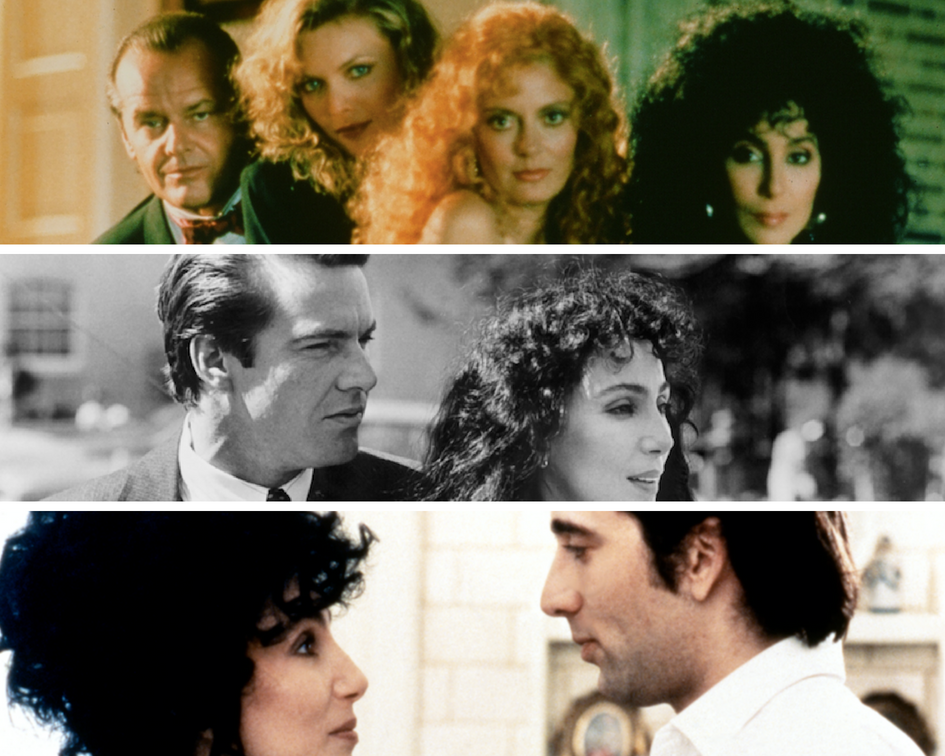
Getty/Alamy
The Gold
“The Witches of Eastwick” (1987)
Coming off of “Mask,” some studio executives were still questioning Cher’s ability to attract audiences who knew her as an outrageous pop doyenne who hadn’t had a hit single in several years. Her credibility was put to the test each time ― and each time, she passed.
In 1987, at the critical age of 41, Cher landed a troika of commercial hits in which she was the centerpiece, starting with the delicious lark “The Witches of Eastwick,” her first comedy since her variety show a decade earlier. Then came the overwrought legal thriller “Suspect,” which required her to pull off boxy suits as a strapped D.C. attorney spouting verbose monologues. And following that was the snappy romance “Moonstruck,” which demanded a thick accent that was Italian by way of Brooklyn. In each, Cher captured a quotidian version of American life ― and what’s more transformative than Cher pretending to be quotidian?
Playing another single mom in “Eastwick” (directed by “Mad Max” maestro George Miller), she held her own against Susan Sarandon, Michelle Pfeiffer and Jack Nicholson. Cher clearly relished the role. During a tart takedown of Nicholson’s lothario, she trades the maximalist energy that many actresses would bring to the scene for a soft smirk, savoring every word as she calls him “physically repulsive, intellectually retarded, morally reprehensible, vulgar, insensitive, selfish [and] stupid.”
“Suspect” (1987)
For “Suspect” and “Moonstruck,” Cher was the directors’ first choice, netting a salary of more than $1 million apiece ― an impressive figure in the mid-’80s, though notably less than what men like Bruce Willis and Robert Redford commanded.
“Suspect” let Cher check off a requisite movie-star box, as it was all but decreed in the ’80s and ’90s that every serious actor make at least one blandly entertaining legal thriller. Like the best of them, Cher’s was a courtroom drama with an ethically dubious love story nestled into the center. (Young Dennis Quaid was irresistible.) It might be the least Cher-y of any Cher performance ― can you imagine her sporting a no-frills power suit today? ― and yet she is comfortably forceful in the role. Amazingly, the woman whose assless one-piece would soon get her banned by MTV looks cozy amid mounds of paperwork.
“Moonstruck” (1987)
“Suspect” was a modest box-office hit in October, but it was largely forgotten by December, when Cher turned in her career-defining performance in “Moonstruck.” Playing a widowed bookkeeper who falls for her fiancé’s unruly younger brother (Nicolas Cage), Cher cycled through a wider range of emotions than any movie to date had asked of her, lending realism to what is ultimately a Cinderella fairy tale. That she does so with the same physical charisma is a wonder, especially considering she didn’t think Cage was a generous scene partner. (She must have savored that slap.)
“Moonstruck” became the fifth highest-grossing release of 1987 and attracted Cher’s warmest reviews. The following April, she won the Oscar for Best Actress. Wearing another audacious Bob Mackie gown, Cher delivered an earnest speech that was more movie-star sleek than pop-star chic.
“I don’t think this means I am someone, but I guess I’m on my way,” she said in a rare moment of modesty. Every now and then, even Cher plays along.

Getty/Alamy
The Wobble
“Mermaids” (1990)
As if emboldened by the respect her film career had garnered, Cher signed a new record contract with her friend David Geffen’s label. “Cher,” released in 1987 after five years away from music, produced a couple of mild hits (“I Found Someone,” “We All Sleep Alone”) and prefaced 1990′s “Heart of Stone,” a rock record with enough big-haired power pop (namely “If I Could Turn Back Time”) to place her in the same league as Madonna, Paula Abdul and Whitney Houston.
She’d set up a production company with Tri-Star Pictures and bagged her next film role, “Mermaids,” a 1960s-set dramedy about an image-conscious firebrand raising two very different daughters (Winona Ryder and Christina Ricci). The role perfectly married Cher’s pop image and film image. Her character was progressive about sex in a way that most mildewy mom roles weren’t, but with enough working-class gumption to make her more than a head-in-the-clouds prima donna. Cher, a child of divorce who grew up without much money, nails that paradox.
But “Mermaids” was also a turning point. Having launched a lengthy world tour in summer 1989, Cher was exhausted to the point of illness, and she found herself sparring with director Lasse Hallström (“My Life as a Dog”). Production shut down so Cher could rest, during which time Frank Oz (“Little Shop of Horrors”) replaced Hallström. Cher didn’t get along with Oz any better ― “she emotionally beat the shit out of him,” a source reportedly told Vanity Fair ― and he left the project. (“Look, I’m only difficult if you’re an idiot,” Cher said.) Richard Benjamin (“The Money Pit”) came aboard and steered the movie to completion.
This backstage drama was splashed across the press, cementing the cantankerous reputation that most divas achieve at some point or another. “Mermaids” made OK money ― far less than it should have, since it’s such a delight ― and Cher mused that her acting days were probably numbered, partly because she was well past the age of 40, at which point Hollywood women become biddies.
“The Player” (1992) and “Ready to Wear” (1994)
After the “Mermaids” theatrics, Cher’s agent tried to push her to take more film roles, namely one of the leads in “Thelma & Louise.” But she needed a break. (Cher had also turned down Danny DeVito’s “The War of the Roses.”) Instead, she released the album “Love Hurts” in 1991 ― but it’s biggest single, “Love and Understanding,” stalled at No. 17. She then embarked on another tour and did hair and skin care infomercials that turned her into something of a punch line.
But instead of fading away, she did the Cher-iest thing of all: She played herself, in ultimate diva form, twice. The first time was in old friend Robert Altman’s 1992 Hollywood satire “The Player.” The second was in old friend Robert Altman’s 1994 fashion satire “Ready to Wear.” Both movies saw her walking red carpets as a VIP at industry events.
Waltzing into “The Player,” Cher glides down a gala red carpet as a TV announcer says, “Well, leave it to Cher to wear fire-engine red when the impossible-to-come-by invitations call for black and white only, please.” In playing along with Altman’s joke, she shattered a wall between person and persona. She’d accrued the sort of diva caliber that can feel mythological, the kind that doesn’t have to abide by the industry’s rules — and she wanted us to know it.
During an interview with a TV journalist in “Ready to Wear” who balks at how good she looks, Cher replies, “Well, yeah.” The cameos were brassy ways of asserting the stature she’s accrued after three decades in the business. Also essential: They let Cher poke fun at her own attention-seeking iconoclasm.
For as much as “The Player” verified Cher’s stardom, it did little to vault her back into Hollywood’s top tier. An Entertainment Weekly article from 1993 — written by a young Ryan Murphy — quoted an anonymous Hollywood producer who said casting Cher was now a “risk.” Her bankability had waned. “I’m not sure if I want to continue to be Cher,” she admitted in 1994.
“Faithful” (1996)
But Cher pressed on, attempting to mount “Tabloid,” about an actress and a tabloid editor, with her “Witches of Eastwick” pal Michelle Pfeiffer. She also wanted to remake the 1945 fantasy “The Enchanted Cottage” as a musical (with the encouragement of Francis Ford Coppola), but she lost the rights and the project never came to fruition. (She would continue to discuss it well into the 2010s.)
1995 and early ’96 were especially rough for Cher commercially. Her Southern rock-inflected album “It’s a Man’s World” flopped, as did her first lead role in six years, “Faithful,” which opened April 19, 1996. Cher is, unsurprisingly, the most compelling thing about “Faithful,” portraying a vulnerable housewife whose philandering husband (Ryan O’Neal) hires a hitman (Chazz Palminteri) to murder her. But the script, written by Palminteri, isn’t funny or tense enough. It was the first time her reputation preceded a character: We never believe Cher’s life is in danger, possibly because she’s too famous to be killed off.
“Faithful” earned a piddly $2.1 million, but Cher shrugged off its reception: “It was no loss. At least the reviews said it was nice to see me acting again.”
Cher’s movie career could have perished altogether, as most established pop stars can’t afford to flounder that hard. A bad single comes and goes, but a bad movie has millions of dollars riding on it.
“If These Walls Could Talk” (1996)
Cher has never been a quitter, though. Toward the close of 1996, she returned with a project so intrepid no Hollywood studio would touch it. Demi Moore had spent five years producing “If These Walls Could Talk,” seeking a home for it on a television network willing to back an unapologetically pro-choice triptych about women ― one in 1952 (Moore), one in 1974 (Sissy Spacek) and one in 1996 (Anne Heche) ― seeking abortions. That home turned out to be HBO.
Nearing 50 and recognizing that meaty roles were growing rare, Cher saw “If These Walls Could Talk” as a chance to advocate for reproductive rights (she’d had two legal abortions, and her mother and grandmother both nearly died from illegal abortions when they were younger). She also seized the opportunity to direct, something she’d talked about doing for years. So she took a small role and helmed the movie’s third segment, playing a self-possessed doctor co-existing with a protest mob outside her Chicago abortion clinic. It was a different role for her ― more austere ― and Cher pulls off an appropriate blend of fatigue and perseverance.
When “Walls” premiered on Oct. 13, 1996, it became the highest-rated movie in HBO’s 24-year history. Cher earned a supporting-actress nomination at the Golden Globes ― an inadvertent sneer pitched at anyone who said her movie pilgrimage had ended.
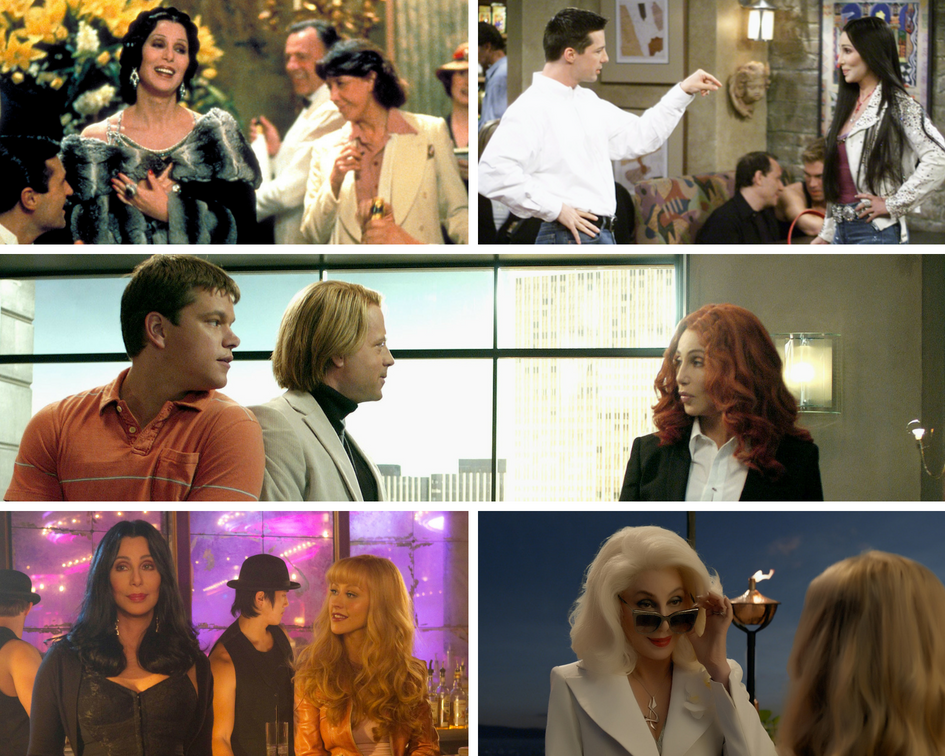
Getty/Alamy/Universal Pictures
The Redemption
“Tea with Mussolini” (1999)
Cher took a breather in 1997, paving the way for what would become one of the glitziest comebacks in pop history. She was 52 when “Believe” became her first No. 1 single since 1974. Producers had urged her to embrace her gay fanbase via a dance jubilee, and suddenly she was competing with younger artists like Britney Spears, TLC and Mariah Carey. By the end of 1999, it was the year’s most popular song. Her divadom flew off the charts, far more than it had with the caricature of “The Player.”
“Believe” is also the song that made autotune a phenomenon. That someone who wasn’t known as a remarkable singer would distort her voice in such an unconventional way read as an act of rebellion, a boldfaced “look at what I can do.” Cher’s record company insisted the effects be removed, to which she said, “Over my dead body!”
Around that time, Cher co-headlined VH1′s all-star concert “Divas Live ’99” and launched a massive world tour so grandiose it was almost comical. Furthermore, she had divas who were once considered her peers (Cyndi Lauper, Belinda Carlisle) opening for her.
Cher was bigger and bolder than ever when “Tea with Mussolini” opened in theaters on May 14, 1999. On the Italian set the previous summer, she was the only actor to arrive with her own makeup artist, hairdresser and personal secretary ― which didn’t stop her from feeling intimidated by Maggie Smith, Judi Dench, Joan Plowright and Lily Tomlin. Director Franco Zeffirelli (“Romeo and Juliet”) based the World War II-set ensemble dramedy on a chapter of his autobiography, centering the story on a colony of English women living in Florence in the 1930s.
Smith is the movie’s MVP, but Cher saunters in as a rich American widow possessing a caustic but wacky regality. It makes sense that the height of Cher’s bedazzled pop career coincided with a movie in which she flits around in gaudy costumes. Her persona no longer fit the rural threads of “Silkwood” or the juridical garb of “Suspect” ― and it never would again.
“Tea with Mussolini” made a stolid $14.4 million domestically. Moreover, it was tossed aside during Oscar season despite being prototypical awards bait. That’s not necessarily her fault, but it does lead to an interesting takeaway: What people wanted, post-“Believe,” was to see Cher simply be Cher.
In late 2000, she was working to get that “Enchanted Cottage” musical off the ground, imagining the lead character to be a composite of “me and Tina Turner and Madonna.” But nothing ever came of it, and Cher didn’t take another lead role until 2010′s “Burlesque.” She mounted a so-called farewell tour and leaned into the Cher Plays Herself trademark. It worked to her benefit.
“Will & Grace” (2000, 2002) and “Stuck on You” (2003)
In 2000 and 2002, she appeared as a sassy Cher on “Will & Grace.” In a beloved 2000 episode titled “Gypsies, Tramps and Weed,” a twist on Cher’s thundering 1971 song “Gypsies, Tramps & Thieves,” Jack (Sean Hayes) is obsessed with a Barbie-sized Cher doll. Who else would walk in on his infatuation but Cher herself? Except Jack believes she’s a drag queen ― a tongue-in-cheek crack about Cher’s campy image. They have a sing-off in which Jack, convinced his impression is superior, greatly exaggerates her husky warble and dramatic hair toss in a way that essentially mocks Cher to her face. Amused, she gets the last laugh, slapping him and administering that quotable classic: “Snap out of it.”
There’s no movie-star move more powerful than playing yourself with an ironic wink, and “Will & Grace,” like “The Player” before it, let Cher poke fun at herself in a refreshing way. She is treated as an empire, at once pointedly self-aware and deliciously aloof ― a perfect way to master her own narrative without being beholden to it.
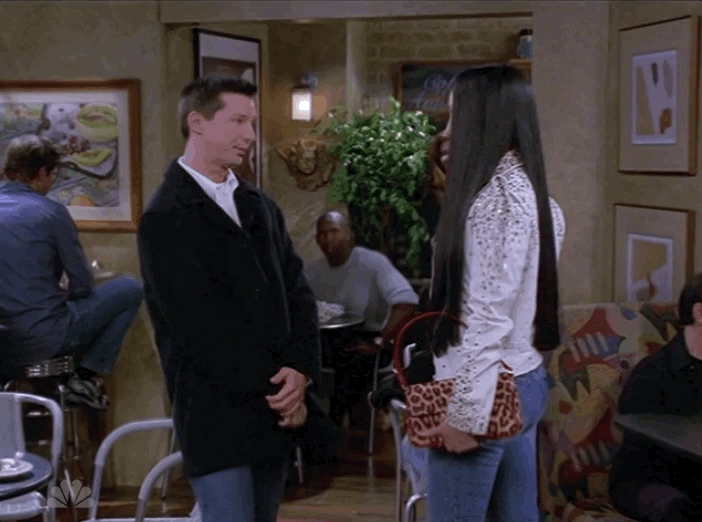
In 2003, she appeared as a sassier Cher in the one-joke farce “Stuck on You,” starring Matt Damon and Greg Kinnear as conjoined twins who move to Hollywood when one decides to launch a movie career. Stomping around in a fitted leather jacket and a spiky thatch of jet-black hair that resembles David Bowie’s in “Labyrinth,” Cher yelled at her agent (Jackie Flynn) about the state of her acting career: “Why am I doing this lame-ass TV show when I should be doing movies?” she says before reminding him that she has an Oscar.
Cher’s “Will & Grace” appearances were hardly lame, yet one can’t help but wonder whether Cher was bitter about her acting career’s ebbs. Further complicating matters, Hollywood was drifting away from idiosyncratic character dramas and toward inflated action spectacles. Between 2004 and 2009, she didn’t appear onscreen at all. And so began the Vegas residency phase, which continues today.
“Burlesque” (2010)
When Cher returned with “Burlesque” in 2010, the punch lines wrote themselves. A hammy musical about an aspiring actress (Christina Aguilera) who coaxes her way into the tutelage of a nightclub matron (Cher), the movie went through major script rewrites (by “Juno” scribe Diablo Cody, “Erin Brockovich” scribe Susannah Grant and “Moonstruck” scribe John Patrick Shanley, no less) but still felt like a collection of rhinestone-studded music videos. Cher seems bored by the whole affair, which makes sense: David Geffen, who once dated “Burlesque” director Steve Antin, had to talk her into doing it. Cher is miscast ― would someone with her magnetism really be running a beggared cabaret? ― but she still manages to bring a sense of pride to the character.
“Look, I have a very narrow range,” she said in 2010. “I’ve never tried anything more than playing who I am. If you look at my characters, they’re all me.”
The thing is, she’s wrong. Cher is no Cate Blanchett, but she’s far more transformative ― or at least more instinctive ― than she gives herself credit for. Regardless, her big statement in “Burlesque” reverberated loud and clear during a ballad written specifically for her: “I’ll be back / Back on my feet / This is far from over / You haven’t seen the last of me.”
It also makes sense that Cher ended up viewing the movie as a reflection of her legacy: “I’m in a strange place right now,” she said in 2013. “I’m too old to be young and I’m too young to be old, so I have to be used creatively. In ‘Burlesque,’ which was horrible, I had no love interest, I was running this [troupe], that’s who I was. It could have been a much better film. […] Terrible director! Really terrible director. And really terrible script. I remember him saying to me, I don’t care about what you say, I just want to shoot the dance numbers. Had it been shorter, it would have squeaked by and been a really good popcorn movie.”
“Zookeeper” (2011) “Home: Adventures with Tip & Oh” (2017) and “Mamma Mia! Here We Go Again” (2018)
In the same breath, Cher vowed to keep acting. But other than voicing a lion in the Kevin James comedy “Zookeeper” and voicing a self-referential alien who “knows how to make an entrance” in Netflix’s “Home: Adventures with Tip & Oh,” no other projects had materialized until now.
“Mamma Mia! Here We Go Again,” like “Burlesque” before it, finds Cher playing Cher, insofar as her snazzy attire and snappy dialogue herald her diva bona fides. Oh, and because she is the sequel’s show-stopping main event, of course.
She shows up in the final 15 minutes, helicoptering into the Greek hotel now run by Sophie (Amanda Seyfried). You know it’s Cher the second the chopper appears. In dramatic fashion, we see Cher’s pant leg touch down before we ever glimpse her wrinkle-free face. It’s a moment that practically begs audiences to cheer.
“Mes enfants, je suis arrivé; let the party commence,” she declares after emerging from the plane. When she sings ABBA’s “Fernando” with Andy Garcia, fireworks explode across the sky.
In almost no time, Cher steals the movie, snapping and shimmying as if onstage at one of her concerts ― the ultimate marriage of her 55-year-old career’s many tentacles. If it’s possible for Cher to outdo Cher, “Mamma Mia!” is it. But “Mamma Mia!” also crystallizes what we’ve long assumed about Cher: Even at 72, she is still in on the joke that was christened in “The Player” and confirmed on “Will & Grace.”
She’ll probably never spawn another Top 40 hit ― see: her 2013 album “Closer to the Truth” and her recently announced collection of ABBA covers ― but she can still capitalize on the Cher brand to electrify audiences familiar with her diva cachet. Today, her biggest transformation is wearing a bleach-blond wig. Maybe that’s all the transformation we really want from Cher anyway, even though “Mamma Mia!” doesn’t quite know what to do with her, plot-wise.
If pop stars are meant to be mythological and actors are meant to be aspirational, Cher has mastered both domains. She did so by never shying away from how the world metabolized her iconography, and by forever laughing at the absurdity of fame. That sense of humor is now her lifeblood. No matter what happens in the years to come, we haven’t seen the last of her.
[ad_2]
Source link

